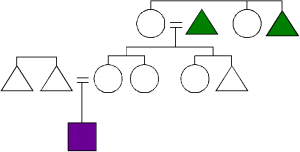![]()
![]()
![]()
![]()
![]()
![]()
jawāna
the feeling that things are not as they should be, that something is wrong.
![]()
![]()
![]()
![]()
![]()
![]()
jawāna
the feeling that things are not as they should be, that something is wrong.
![]()
![]()
![]()
![]()
![]()
![]()
![]()
jaweñēn
disliking, displeased. As in sele jaweñēn to anmāe; “I dislike/don’t like tea.”
![]()
![]()
![]()
![]()
![]()
![]()
![]()
anwālti
![]()
![]()
![]()
![]()
![]()
![]()
antōli
Both of these words mean feelings, emotions, thoughts, moods, and other mental states, though anwālti are considered to be less fleeting than antōli. Exactly which feelings are classified as anwālti and which are classified as antōli is a matter of debate. There are some who would say that there are only eight or nine or fourteen or sixteen or some other limited number of anwālti and all other feelings are antōli.
![]()
![]()
![]()
![]()
![]()
![]()
![]()
![]()
![]()
mawēsaron
one’s great uncle, one’s mother’s mother’s brother or husband, any male kin of one’s grandmother’s generation. Again, the green triangles in relation to the purple square:

![]()
![]()
![]()
![]()
![]()
![]()
mawēsa
one’s maternal uncle, one’s mother’s brother, one’s male caregiver or parent, any of one’s mother’s male kin of the same generation. So, the green triangles are the purple square’s mawēsi:

![]()
![]()
![]()
![]()
![]()
![]()
sawūrre
one’s voice.
![]()
![]()
![]()
![]()
![]()
![]()
sawūta
one’s feces or shit. This is a bad word in Kēlen.
![]()
![]()
![]()
![]()
![]()
![]()
sawūna
one’s sweat;
![]()
![]()
![]()
![]()
![]()
![]()
sawāla
one’s senses.
There are four senses. They are: sakerōñ sight, vision; sakexīr hearing; sakehūñ smell and taste; and sakekīwwe touch. These words are used when referring to the actual sense. Otherwise one experiences with one’s eyes, ears, nose or mouth, and skin or hands:
tele jāo mo lerōña;
I saw that.
tele jāo mo lesāra;
I heard that.
la sakexīr jakāpa;
Her hearing is bad.
![]()
![]()
![]()
![]()
![]()
![]()
sawānne
one’s foot or feet.
And sawānne jarōnne are footprints.